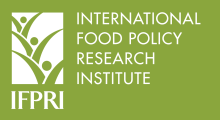Resource information
The purpose of this paper is to understand to what extent such a strategy is appropriate for the low income rice-based countries of the Indochina-Myanmar Region1 (IMR). On the one hand, the arguments in favor of agricultural diversification and agrofood based rural industrialization seem even more pressing than for the lower-middle income countries of Southeast Asia. The predominantly agrarian structure of these economies makes the need to increase income in rural areas more urgent, given the extreme difficulties that the urban and industrial sector will face to absorb a growing rural labor force in the medium term. With 80 percent or more of the population in rural areas in countries which have mostly reached rice self-sufficiency and boast a high potential for exportable rice surplus, the acceleration of growth and income in rural areas in the future will have to come from non-rice agricultural commodities and rural non-farm activities. On the other hand, successful diversification requires a commercialized agricultural system, adequate infrastructure development, and well functioning rural institutions, all conditions barely present in the IMR.


